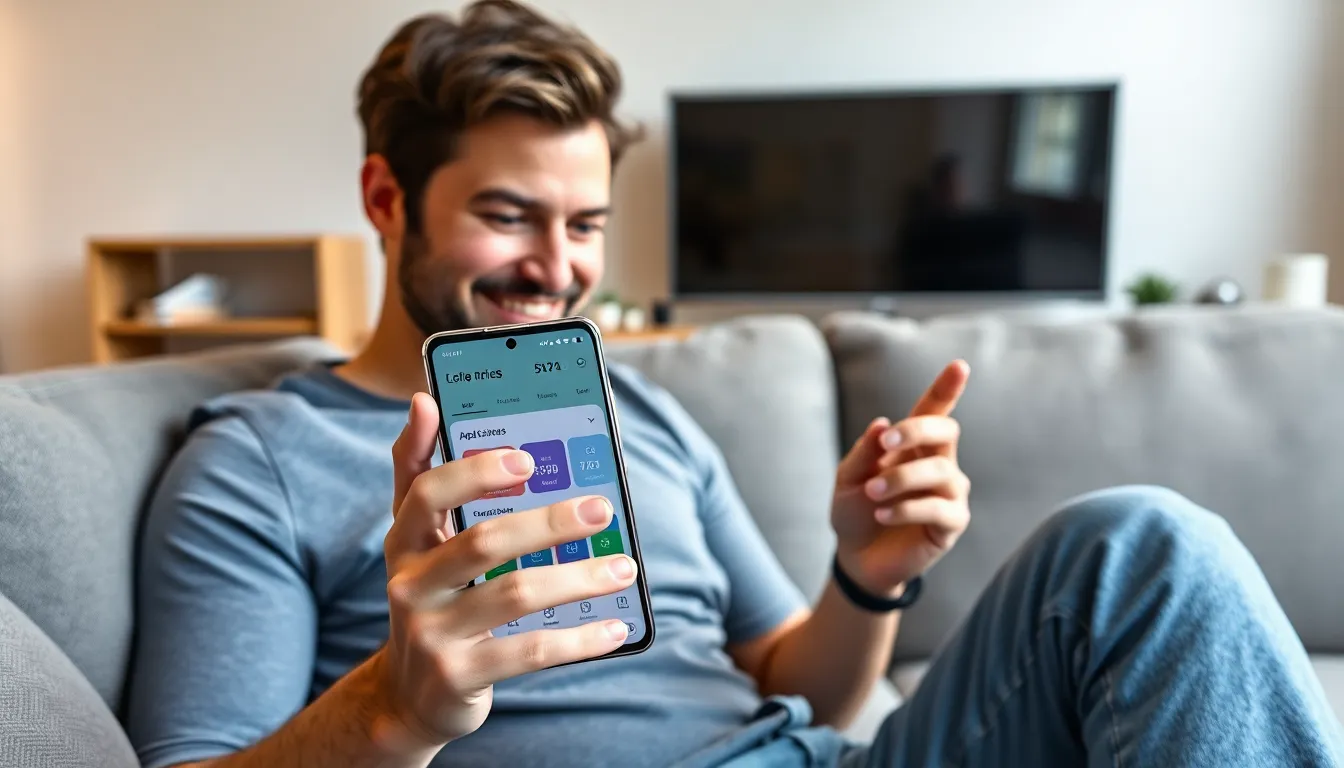Table of Contents
ToggleIn a world where scrolling is a sport and binge-watching is an art form, keeping tabs on screen time has never been more crucial. Samsung users often find themselves lost in a sea of apps, notifications, and that one game that just won’t let go. But fear not! Tracking your screen time doesn’t have to feel like searching for a needle in a haystack.
Understanding Screen Time Tracking
Screen time tracking assists users in becoming aware of their digital habits. This feature, found on Samsung devices, provides valuable insights into app usage and device interaction. Metrics like daily usage time, app usage duration, and notification counts highlight how users engage with their devices.
Samsung’s Digital Wellbeing tool is essential for monitoring screen time. It offers an overview of how long devices are in use. Users can check data for specific apps, which helps identify which ones consume the most time. Parents might find this information particularly useful for managing children’s device usage.
Setting usage limits can enhance productivity. Users can establish daily timers for individual apps, fostering healthier digital habits. Those timers ensure that users do not exceed preferred usage durations. When time limits are reached, applications will pause to encourage breaks.
Viewing screen time data is straightforward. Users navigate to the Settings app, opening the Digital Wellbeing section. From there, they access detailed reports summarizing their weekly or daily usage. This simple process promotes greater awareness regarding screen time, empowering users to make informed decisions.
Adjusting settings based on screen time reports fosters personalized experiences. By monitoring overall device use, users can decrease distractions and enhance focus. Observing screen time patterns encourages smarter usage habits, contributing to better mental well-being.
Utilizing Samsung’s screen time tracking ultimately supports a balanced approach to technology. It aligns with users’ goals for reducing screen dependency and encourages mindful device interaction.
Accessing Screen Time on Samsung Devices

Accessing screen time information on Samsung devices is simple and effective, providing valuable insights into usage patterns.
Using the Settings App
To view screen time, open the Settings app. Scroll down and select Digital Wellbeing and parental controls. Here, users find detailed information about daily screen time and app usage metrics. Daily summaries include time spent on different apps with easy-to-read graphs. Tapping any app reveals more about usage frequency and total time spent. Adjusting settings based on this data helps promote healthier device interaction. Users can also set timers for specific apps to limit usage effectively.
Using Digital Wellbeing
Digital Wellbeing offers robust features for managing screen time. After accessing the app, users see a dashboard displaying app usage statistics and notification counts. Users can track trends over time, identifying which apps require less attention. Setting app timers limits usage to promote self-regulation. Notifications can also be reduced through Focus mode, minimizing distractions during important tasks. Digital Wellbeing empowers users to make informed decisions regarding device interactions, supporting healthier technology habits.
Interpreting Screen Time Data
Understanding screen time data helps users gain insights into their digital habits. Users can analyze their interactions with devices by focusing on specifics such as usage frequency and app time allocation.
Daily vs. Weekly Breakdown
Daily breakdowns provide immediate insights into day-to-day app usage. Users can see which apps consume the most time each day, allowing for quick adjustments. Weekly breakdowns offer broader trends, highlighting changes in app engagement over time. A weekly overview can reveal patterns that daily summaries might overlook, assisting users in identifying habits that require modification.
App Usage Insights
App usage insights show which applications dominate users’ time. Users can track total hours spent on each app, facilitating better time management. Notifications help gauge user engagement across apps. By observing how often apps are used, individuals can identify distractions that impact productivity. Digital Wellbeing tools highlight trends in usage, helping users make informed choices and set realistic limits.
Managing Your Screen Time
Managing screen time is essential for fostering a balanced digital lifestyle. Samsung users can utilize built-in features to help control their device interactions.
Setting App Limits
Setting daily timers for specific apps promotes healthier habits. Users access this feature via the Digital Wellbeing section in Settings. Once there, they can easily choose an app and establish a time limit. Limits trigger reminders when users approach their allocated time. Activating app limits encourages mindful usage, helping individuals stay focused and reduces instances of impulse scrolling. Families benefit too, as parents can set restrictions for children’s app usage, ensuring a safe and balanced digital environment.
Using Do Not Disturb Mode
Using Do Not Disturb mode minimizes distractions during critical tasks. Activating this feature silences notifications, allowing users to concentrate better. Samsung devices provide quick access through the notification panel or Settings menu. Users can customize exceptions, enabling calls or messages from select contacts. This customization offers flexibility while maintaining focus. Engaging Do Not Disturb aids productivity and encourages deeper interactions without constant interruptions.
Monitoring screen time on Samsung devices is crucial for fostering healthier digital habits. By utilizing the Digital Wellbeing tools, users can gain valuable insights into their app usage and make informed decisions about their device interactions. Setting app limits and utilizing features like Do Not Disturb can significantly enhance productivity and reduce distractions.
With easy access to screen time data, individuals can quickly identify patterns in their usage and adjust accordingly. This proactive approach not only promotes a balanced digital lifestyle but also empowers users to take control of their technology habits. Embracing these strategies leads to a more mindful and focused interaction with devices, ultimately supporting personal well-being in an increasingly digital world.




